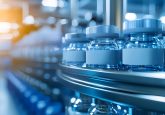Optimized capillary electrophoresis-based analytical methods for mAbs and complex mAb formats

Researchers from Boehringer Ingelheim Pharma (Germany), Institute of Pharmaceutical Biotechnology (Ulm, Germany) and Rentschler Biopharma (Laupheim, Germany) have optimized two capillary electrophoresis-based analytical methods to analyze a range of monoclonal antibodies and complex mAb formats. The results were published in Electrophoresis.
As monoclonal antibodies (mAbs) have become important therapeutic agents, there has been an increasing demand for high-resolution analytical methods to characterize them. When mAbs are modified through deamidation, glycosylation, aggregation, etc, their charge state can change so charge heterogeneity analysis is crucial when using mAbs for therapeutic applications. To facilitate this analysis, researchers have developed two capillary electrophoresis (CE)-based analytical methods: capillary zone electrophoresis (CZE) and imaged capillary isoelectric focusing (iCIEF) to analyze a broad spectrum of mAbs and complex mAb formats.
CE-based methods such as CZE and iCIEF possess high resolving power and require simple instrumentation and so have recently moved into focus over ion exchange chromatography (IEC)-based methods, which often require extensive method development and long analysis times.
When conducting CZE, a capillary is filled with a background electrolyte (BGE) and a sample is introduced using electrokinetic or hydrodynamic injection. When a constant voltage is applied, an electric field is generated, causing analytes to migrate due to their net charge. In the new study, the researchers used a new buffer system to optimize the BGE with an alternative dynamic coating agent and superior polymeric additive. The pH of the BGE was increased, leading to enhanced resolution of high pl and complex format mAbs.
You may also be interested in:
- Novel stationary phases with Joseph Pesek
- Utilizing monoclonal antibodies to regulate checkpoint proteins & boost immune response
- Capillary electrophoresis-mass spectrometry in metabolomics: highlighting the sweet spots
For iCIEF, a coated capillary is filled with a mixture or sample, ampholyte and other optional additives. When a voltage is applied, a pH gradient is established and proteins migrate in the electric field until they reach a neutral charge. As iCIEF matrices contain low salt concentrations and analytes focus and concentrate at zero net charge, protein aggregation and precipitation is common, leading to artifacts and weak resolution. This necessitates a solubilizer — usually urea at high concentrations — but urea is known to denature proteins, which could force proteins into a semi-unfolded state. In the new study, the team identified an ampholyte combination offering a highly linear pH gradient and covering a suitable pH range. They also investigated alternatives to denaturing stabilizers and found that non-detergent sulfobetaine 195 exhibited excellent properties for iCIEF applications.
The team concluded that:
“… both CZE and iCIEF methods offer an effective analytical framework for analysing complex and high-pH molecules, thereby enhancing the widespread applicability in biopharmaceutical laboratories.”
Sources: Meudt M, Pannek M, Glogowwski N et al. CE methods for charge variant analysis of mAbs and complex format biotherapeutics. Electrophoresis. doi: 10.1002/elps.202300170 (2024).





